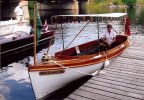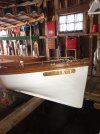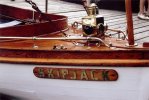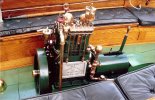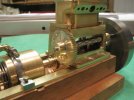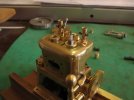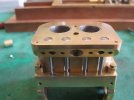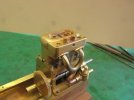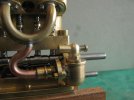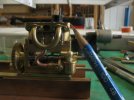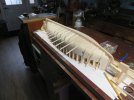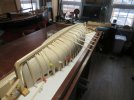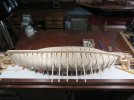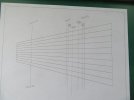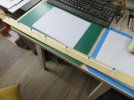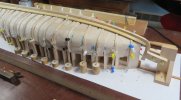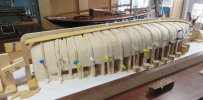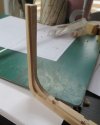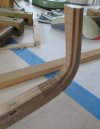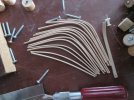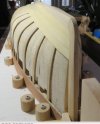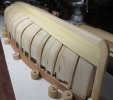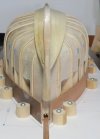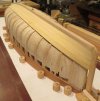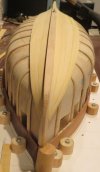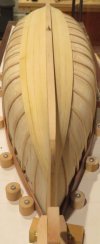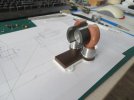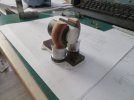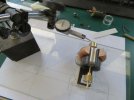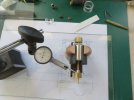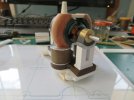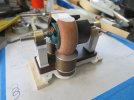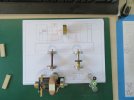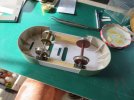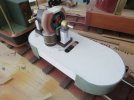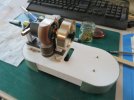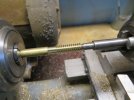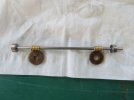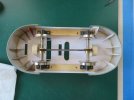michael mott
Western Thunderer
Here are a few pictures of the articulated sanding tool I mentioned on Heather's thread
I made this little sander to sand the 75 year old painted surface of a damaged Basset Lowke steamship model.
The foundation of the pad was the clevis or control rod ends for radio control model aircraft.
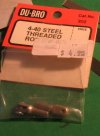
This was attached to the end of some 3/16 hex steel stock.
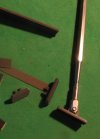
The pads can be made from a number of different plastic sections either commercial such as Plastruct or Evergreen sections
or simply fabricated to suit
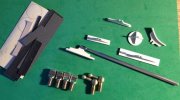
The key is to make them able to snap on and off for ease of switching forms or sizes.
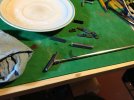
I primarily used wet and dry and simple kept it clean by dipping the pads in a saucer of clean water.
I hope this is helpful
Michael
I made this little sander to sand the 75 year old painted surface of a damaged Basset Lowke steamship model.
The foundation of the pad was the clevis or control rod ends for radio control model aircraft.

This was attached to the end of some 3/16 hex steel stock.

The pads can be made from a number of different plastic sections either commercial such as Plastruct or Evergreen sections
or simply fabricated to suit

The key is to make them able to snap on and off for ease of switching forms or sizes.

I primarily used wet and dry and simple kept it clean by dipping the pads in a saucer of clean water.
I hope this is helpful
Michael
Last edited:

